Shipping country
Wood Species
Use of Sawcut Veneers
Some useful information about the production and use of saw veneers
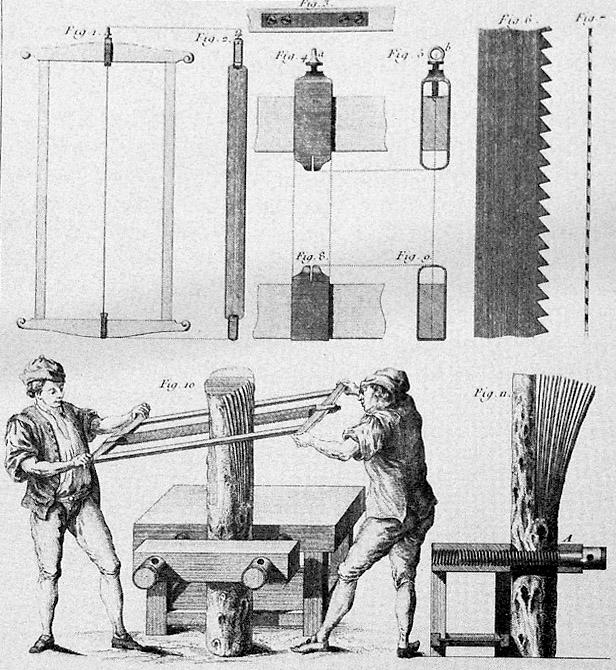
The oldest production method for veneers is sawing. In pre-industrial times, the log was sawn lying on a scaffold above an open pit. One person stood in the pit, the second on a scaffold above the trunk, sawed with a frame saw. Surely a very strenuous job for both workers! The vertical clamping of the log with horizontal cutting direction, as described in Roubo 1769, represents only insignificant progress.
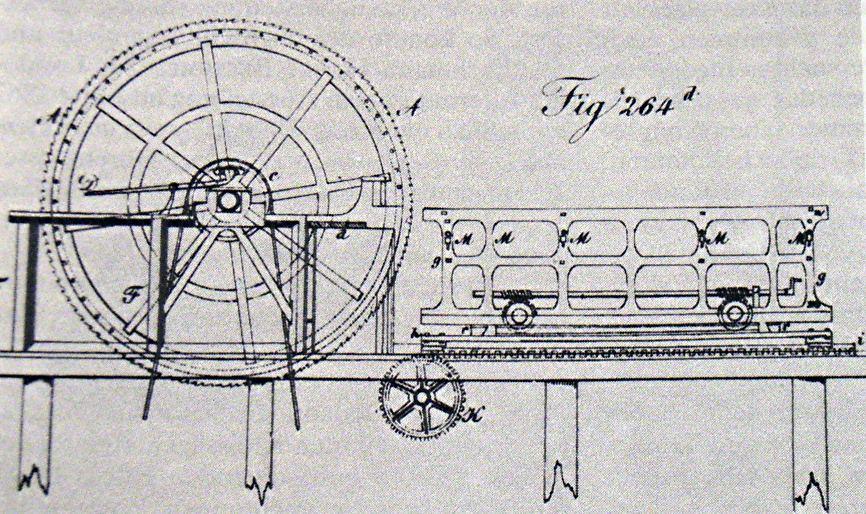
At the beginning of the 19th century, the first steam-powered veneer circular saws were developed, and as early as 1828 a functional specimen was described near Langsdorf; this type of construction was certainly strongly dominated by English technology and was rather scarce to be found in Germany.
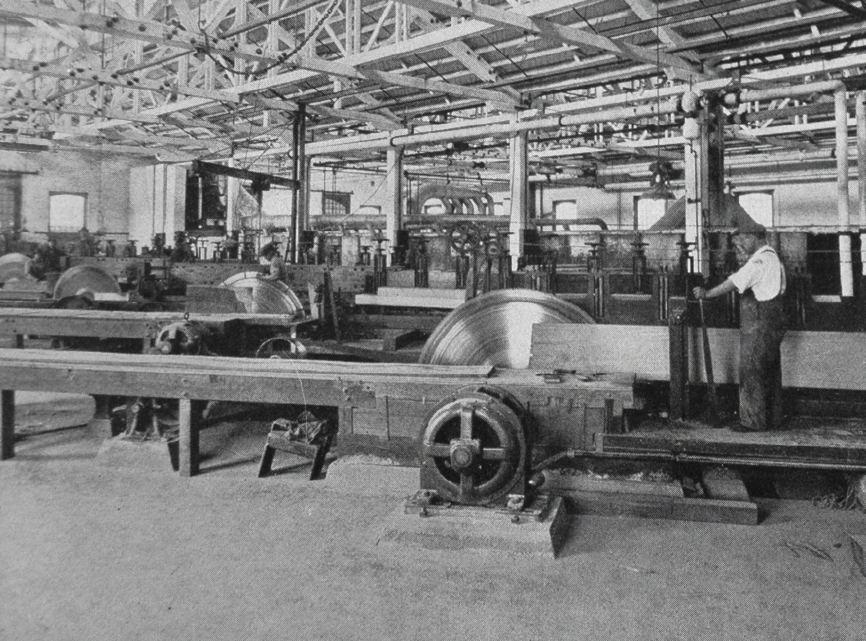
In England and America the development went in the direction of highly specialized circular saws, this design was developed there practically the whole 19th century. In 1920, entire factory halls full of huge circular veneer saws were documented from the east coast of America, which sawed the valuable mahogany wood into veneers in series production.
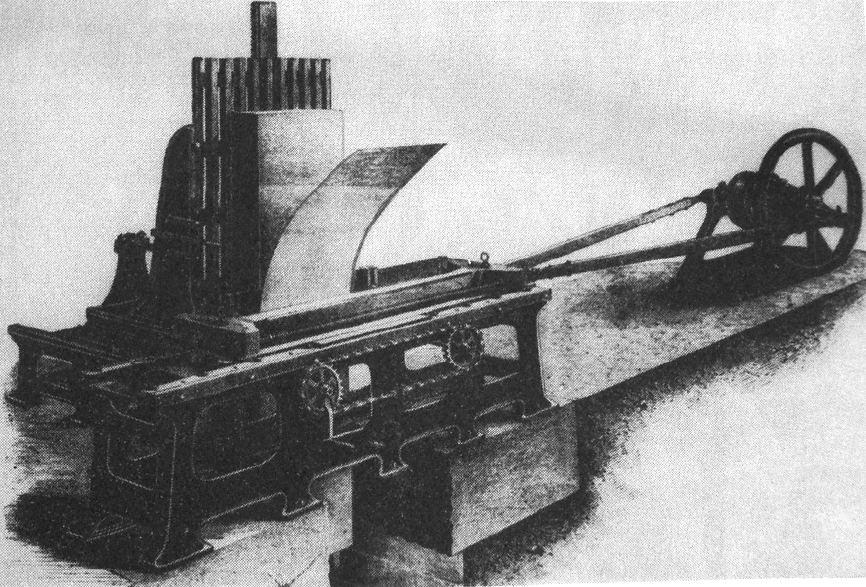
This type of production seems to have proven itself for a long time in America and England, while in continental Europe the shape of the gang saw was already established around 1820. Around 1900 the highest development maturity of such highly specialized veneer saw mills (Hamburger Gatter) was reached.
However, the loss free production of sliced veneer, which had been driven forward since 1800, ultimately meant the end of industrial saw veneer production.
Since approx. 50 % waste occurs when veneers are sawn, this is an elaborate method with high material loss. However, there are some good reasons why saw veneers with typical thicknesses of 1.2 - 2.5 mm are still produced and sold today.
- The sawn veneer retains its light, natural colour and is not changed in colour by cooking for days to make it supple for the slicing process, as with slicing.
- Due to their high hardness, many woods can only be processed into saw veneer, so there is no other method to process e.g. ebony, palm wood, ironwood, snakewood or white beech into sliced veneer.
- Due to their superior material properties, saw veneers are still used today for high-quality and highly stressed carpentry work, e.g. for stair treads, panel parquet, external doors or one-off productions of high-quality furniture designs. The decisive argument here is the longevity of the objects with a processing option given by the thickness of the veneer.
Saw veneer is still used today by many demanding craftsmen when it comes to the production of individual pieces of furniture: customers often demand durable solutions for the construction of expensive design furniture, the almost paper-thin sliced veneers can no longer be repaired or refurbished after damage, e.g. to a table top. Here the use of saw veneers helps to produce furniture that can often be used for generations.
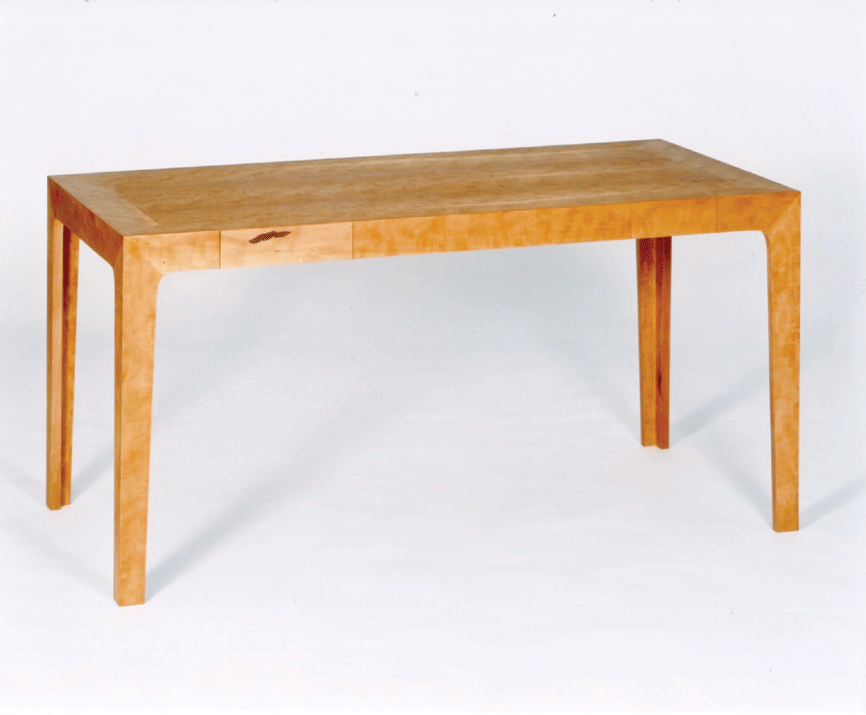
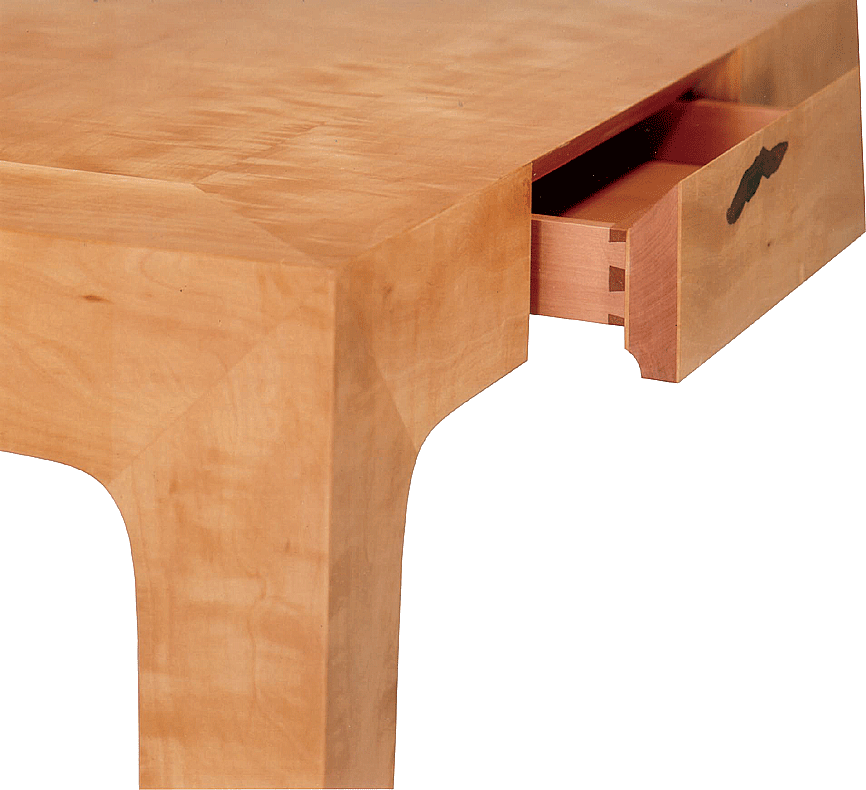
A beautiful example of a contemporary use of saw veneer for a durable and timeless piece of furniture is shown in this table designed and executed by Franziska Morgenstern in 2005 in Berlin in curly, non steamed pear wood!


